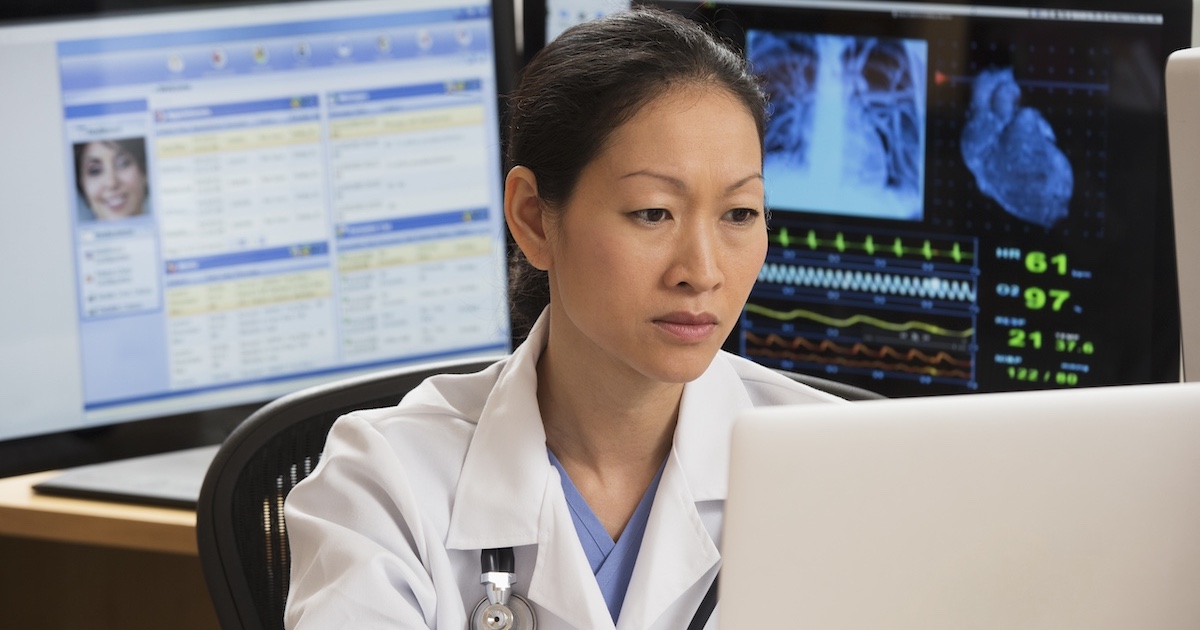
Photo: KNSY/Getty Images
Smiling videos can distinguish between people with and without Parkinson's disease, providing an easy, accessible, and cost-effective way to screen for Parkinson's, particularly when access to clinical diagnosis is restricted, according to a study published in NEJM AI.
Researchers videotaped facial expressions of 1,452 people, including 391 with Parkinson's disease – 300 who were clinically diagnosed and 91 who self-reported their condition.
"Our study shows that a simple smile video, recorded on a computer or smartphone, can help detect Parkinson’s disease with accuracy comparable to specialists," co-lead author Tariq Adnan told MobiHealthNews.
"This is the largest and most diverse dataset of its kind, and it demonstrates that AI can make neurological screening more accessible and cost-efficient worldwide," he said.
Adnan said the approach could give patients an easy, private way to get an early signal of Parkinson’s disease, especially in areas with limited access to neurologists.
"It won’t replace doctors, but it can lower barriers to care by prompting earlier clinical evaluation and helping more people get diagnosed in time for treatment," Adnan said.
Participants in the study, funded by the National Institute of Neurological Disorders and Stroke of the National Institutes of Health, used an online tool to record themselves at home or in a clinical environment imitating three facial expressions: smile, disgust and surprise.
"Facial landmarks and action unit-based features were extracted to quantify hypomimia (facial masking/loss of facial expressions). Machine-learning models were trained on the features to distinguish between individuals with and without [Parkinson's disease]," the study's authors wrote.
The model's universality was tested on external datasets from the U.S. and Bangladesh.
The authors said the study presented "a user-centered framework that enables anyone, anywhere with access to a computer with a webcam and microphone to complete a set of neurological tests and receive a mock screening of their [Parkinson's disease] risk."
Additionally, they noted that the framework also provided access to a chatbot driven by GPT, a neurologists directory and a list of Parkinson's prevention advice.
However, during the study, the authors found technical limitations of the chatbot.
"During the development of our chatbot, we encountered the challenge of striking a balance between expressiveness, correctness and safety. Generative models have the tendency to confidently produce incorrect responses, prompting us to prioritize correctness and safety over expressiveness. This intentional decision has led the chatbot to provide responses that may seem generic, limiting its overall usefulness," the authors wrote.
"As we see a further proliferation of digital tools in healthcare, we hope that the design and ethical considerations and the generated knowledge described in this paper will serve as a helpful reference."
THE LARGER TREND
In August, a study, partially funded by the American Parkinson Disease Association (APDA), found that exposure to a common pesticide can leave long-term changes in the brain’s genetic landscape, possibly increasing the risk of Parkinson's disease.
The research, published in Nature’s npj Parkinson’s Disease journal in July 2025, revealed that the pesticide rotenone triggers lasting alterations in brain gene activity and epigenetic markers (chemical tags that turn genes on or off).
According to a press release by the APDA, the study found that the changes were particularly pronounced in the substantia nigra, which is the region of the brain most affected in Parkinson's, where genes related to inflammation and immune activation were turned on and others were shut down.
Even weeks after exposure ended, molecular memory persisted, suggesting that environmental toxins may prime the brain for disease years down the road.
In July, APDA reported that a new RNA-based blood test could help diagnose Parkinson's disease prior to the development of motor symptoms.
The work, published in Nature Aging, demonstrates a way to target and detect specific sequences contained within transfer RNA (tRNA) for early diagnosis in a simple blood test.
This approach could potentially develop into a commercially available laboratory test, which would make it the first blood-based test to help diagnose Parkinson's disease.
That same month, researchers from Asan Medical Center in South Korea developed a generative AI model that can autonomously learn and analyze brain scans to diagnose and predict the progression of Parkinson's disease.
The research team built a foundational model that can learn from an extensive database of dopamine transporter positron emission tomography (DAT PET) images to diagnose Parkinson's disease, predict its progression and create prognostic images.
The model, called Hierarchical Wavelet Diffusion AutoEncoder, creates a hierarchical representation of the images.
In 2024, a mobile application used to assess sports-related head and brain injuries was tested for detecting and monitoring neurological disorders.
BrainEye's mobile test was studied in clinical trials at The Alfred Hospital in Melbourne. It digitizes the traditional eye movement test, which is done in 60 seconds via a mobile device, and then collects and measures over 20 ocular biomarkers using AI.
For the trials, Alfred Hospital searched for 500 participants dealing with various neurological conditions, including Alzheimer’s disease, Parkinson’s disease, epilepsy and multiple sclerosis.
In 2022, brain data startup Rune Labs announced it received FDA 510(k) clearance to use its StrivePD app to monitor symptoms of Parkinson's disease patients through the Apple Watch.
The StrivePD system utilizes Apple's Movement Disorder API to track tremors and dyskinesia, which are uncontrolled, involuntary body movements.
Patients can also use the app to log their medications, side effects and other symptoms. As part of a partnership with Medtronic, patients using the company's deep brain stimulation device can share that information with care teams as well.

